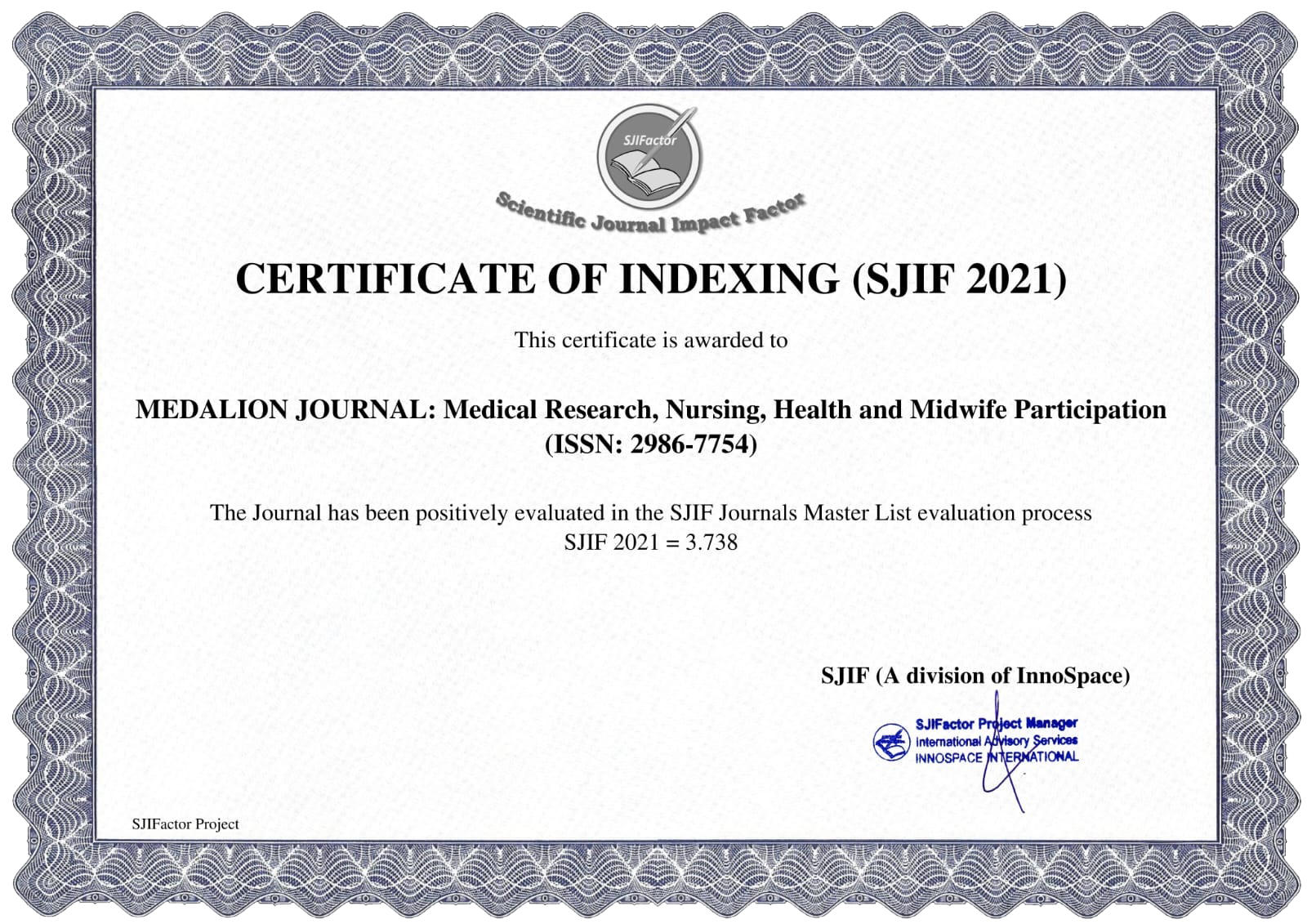ANALYSIS OF GCS AS A PREDICTOR OF MIDLINE SHIFT ON NCCT SCAN IN PATIENTS WITH ACUTE TRAUMATIC SUBDURAL HEMATOMA
Main Article Content
Budiman
Evo Elidar Harahap
Abdurrahman Mousa Arsyad
The Glasgow Coma Scale (GCS) is commonly used to assess the severity of head trauma; however, it is not sufficiently accurate for predicting midline shift (MLS) without imaging support. This study aims to analyze the sensitivity and specificity of GCS in predicting MLS in patients with acute SDH. Subjects were patients diagnosed with acute traumatic SDH who underwent non-contrast head CT scans. Data were collected to assess the correlation between GCS scores and MLS values and to determine the GCS cut-off point for predicting MLS. Among 34 patients, the majority were male (76.5%) and aged between 18–34 years (35.3%). Most patients had a GCS score of 9–13 (38.2%) and showed subarachnoid hemorrhage on CT scan (44.1%). A strong correlation was found between lower GCS scores and increased MLS. The mean MLS increased significantly with decreasing levels of consciousness. The GCS cut-off score to differentiate significant MLS was 13, with a sensitivity of 100%, specificity of 79.3%, positive predictive value of 87%, and negative predictive value of 85%. GCS has a strong correlation with MLS and can be used as a reliable clinical indicator to predict MLS in patients with acute traumatic SDH.
Teasdale, G., & Jennett, B. (1974). Assessment of coma and impaired consciousness: A practical scale. The Lancet, 304(7872), 81–84.
Jacobs, B., Van der Vliet, T. M., De Reuck, J., et al. (2011). Computed tomography and outcome in moderate and severe traumatic brain injury: Hematoma volume and midline shift revisited. Journal of Neurotrauma, 28(2), 203–215.
Chaurasia, A. K., Dhurve, L., Gour, R., et al. (2021). A study of correlation of degree of midline shift on computed tomography scan and Glasgow coma scale in patients of acute traumatic head injury. International Surgery Journal, 8(9), 3075–3081.
Ross, D. A., & Olsen, W. L. (1989). Brain shift and level of consciousness in patients with acute intracerebral hematoma. Journal of Neurosurgery, 71(4), 498–502.
Narayan, R. K., Greenberg, R. P., Miller, J. D., et al. (1981). Improved confidence of outcome prediction in severe head injury. Journal of Neurosurgery, 54(6), 751–762.
Bartels, R. H., Meulstee, J., van der Hoeven, J. H., & Verhagen, W. I. (2015). Midline shift in relation to thickness of traumatic acute subdural hematoma predicts mortality. BMC Neurology, 15(1), 220.
Kido, D. K., Cox, C., Hamill, R. W., et al. (1992). Traumatic brain injuries: Predictive usefulness of CT. Radiology, 182(3), 777–781.





